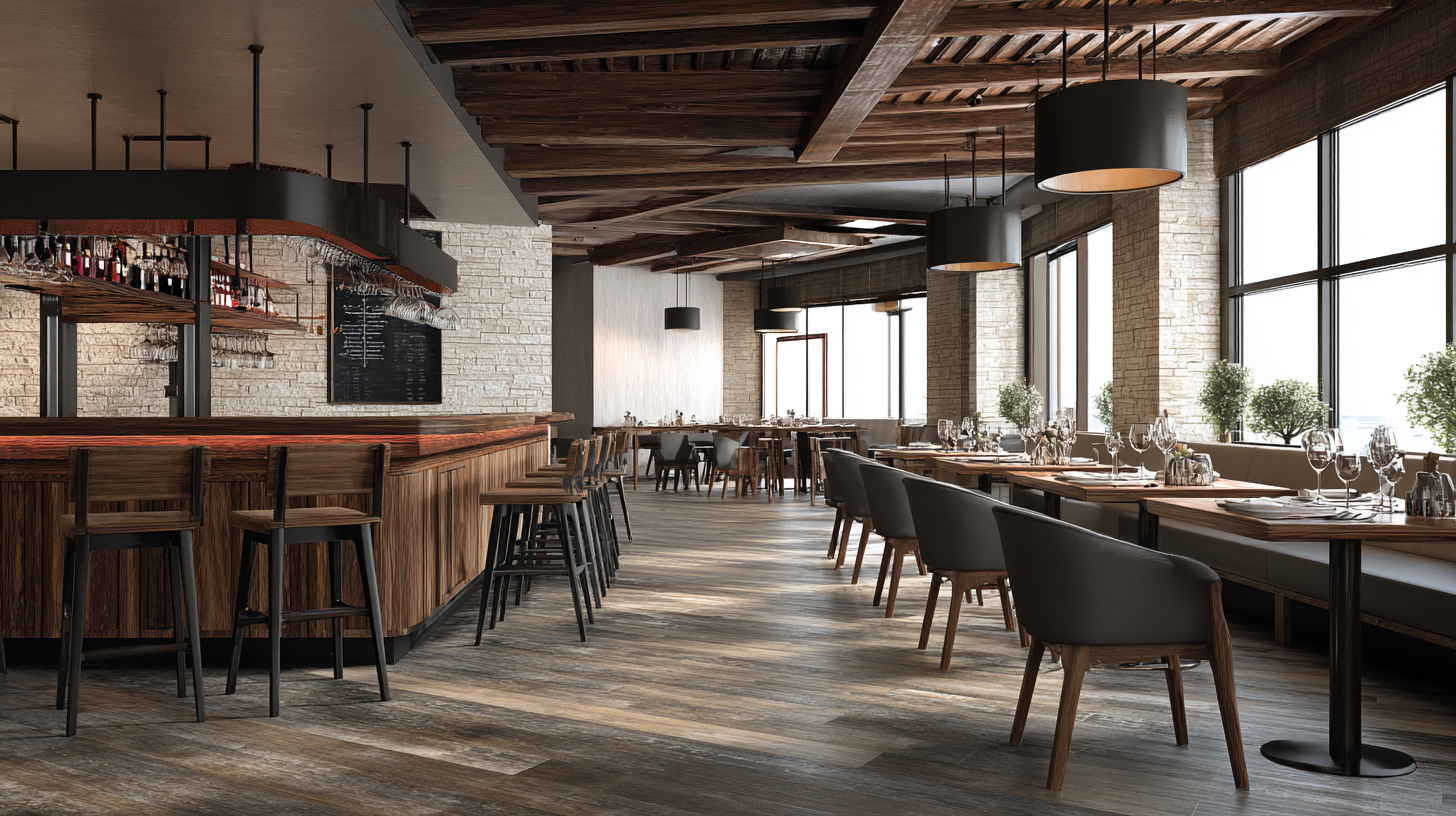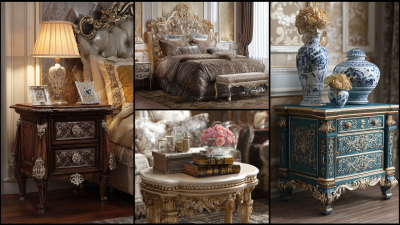
The Evolution of Dining Chairs from Traditional Designs to Modern Innovations
The evolution of chairs dining has undergone significant transformations, reflecting broader trends in design, functionality, and consumer preferences. According to a recent report by Statista, the global dining chair market size was valued at approximately $4 billion in 2022 and is projected to grow as more consumers seek versatile and stylish seating options for their dining spaces. Traditional wooden designs, once the hallmark of dining decor, are now frequently complemented or replaced by modern innovations utilizing materials such as metal, plastic, and upholstered fabrics. The increasing demand for ergonomic and multifunctional furniture is reshaping the industry, making it essential to explore how contemporary designs balance aesthetics with comfort and practicality. This article delves into the journey of dining chairs, focusing on how they have evolved from classic styles to cutting-edge innovations, catering to the varying tastes and needs of consumers in today's fast-paced world.

The Historical Significance of Dining Chairs in Cultural Contexts
Dining chairs have played a vital role in cultural contexts throughout history, evolving from intricate wooden designs to modern interpretations that reflect societal changes. Traditionally, dining chairs were emblematic of status and craftsmanship, often adorned with ornate carvings and textiles that conveyed wealth and artistry. For instance, the significant historical café chair, which has graced venues for over a century, exemplifies how a simple design can carry cultural significance and adaptability through time. Such pieces are not just furniture; they are cultural artifacts that tell the story of dining practices and social gatherings.
The recent recognition of restaurants with historical significance also highlights the importance of dining environments. Establishments like those in Los Angeles that embrace their legacy contribute to a deeper appreciation of dining culture, showcasing how the seating arrangements, including the chairs, shape the dining experience. As dining chairs continue to evolve with innovations in material and form, their essence remains deeply rooted in historical narratives, emphasizing their role not just as functional items but as vessels of cultural heritage that facilitate human connection around the table.
Key Materials and Craftsmanship Techniques Shaping Dining Chair Designs
The evolution of dining chairs has been significantly influenced by advancements in materials and craftsmanship techniques. Traditional designs often utilized solid woods such as oak, walnut, and cherry, which offered durability and a classic aesthetic. Artisans employed time-honored techniques like hand-carving and joinery, ensuring meticulous attention to detail and strength. These chairs not only served functional purposes but also became focal points in dining spaces, reflecting the cultural and social values of their time.
In more recent years, modern innovations have transformed dining chair design through the introduction of alternative materials like metal, plastic, and composite materials. Techniques such as injection molding and CNC machining have enabled designers to create sleek, contemporary shapes that were previously unattainable. Furthermore, the focus on ergonomics has led to the development of chairs that not only look stylish but also provide enhanced comfort during dining experiences. This blend of traditional craftsmanship with modern technology continues to shape the aesthetic and functional aspects of dining chairs, bridging the gap between old and new while catering to diverse consumer preferences.

The Impact of Industrialization on Dining Chair Production and Accessibility
The evolution of dining chairs has been significantly influenced by industrialization, which transformed both their production and accessibility. In the past, dining chairs were often handcrafted, limiting availability and variety. However, with the advent of industrial manufacturing techniques, the potential to produce chairs on a larger scale led to increased accessibility. This shift allowed for a diversity of designs, styles, and materials, accommodating various consumer preferences and budgets.
As the global outdoor furniture market is expected to grow substantially, the dining chair sector mirrors this trend with its expanding presence in both residential and commercial spaces. The growing demand for dining chairs is driven by their versatility in serving dining functions and accommodating social activities. In restaurants and hotels, innovative designs not only meet aesthetic needs but also enhance guest comfort, contributing to a better dining experience. This evolution signifies a remarkable transformation from traditional to modern designs, shaped by industrial advancements and changing consumer dynamics.
Current Trends in Ergonomics and Sustainability in Modern Dining Chairs
In recent years, the dining chair landscape has experienced a significant transformation, driven by the focus on ergonomics and sustainability. Modern dining chairs are now designed not only for aesthetic appeal but also with the intention of providing maximum comfort. Features such as lumbar support, adjustable heights, and thoughtfully contoured shapes ensure that users can enjoy long hours at the dining table without discomfort. This ergonomic emphasis reflects a broader societal trend towards well-being in everyday spaces.

Sustainability is another key trend shaping contemporary dining chair designs. Many manufacturers are turning to eco-friendly materials, such as reclaimed wood, recycled metals, and organic fabrics, to minimize their environmental impact. By prioritizing sustainable choices, these designs not only reduce waste but also contribute to a healthier planet. Consumers are increasingly drawn to products that align with their values, making sustainability a cornerstone of modern dining furniture.
Tips: When selecting dining chairs, prioritize models that offer ergonomic features like cushioned seats and supportive backs. Also, consider chairs made from sustainable materials to ensure your choices contribute positively to the environment. Finally, look for designs that balance style with comfort, making your dining experience both enjoyable and visually appealing.
Innovative Technologies and Smart Features in Contemporary Dining Chair Designs
The contemporary dining chair has undergone significant transformation, integrating innovative technologies and smart features that enhance both functionality and comfort. One of the most notable advancements is the incorporation of ergonomic designs that promote better posture and reduce fatigue during meal times. Many modern chairs are now equipped with adjustable components, allowing users to customize their seating experience to meet individual preferences.
In addition to ergonomic improvements, contemporary dining chairs often feature smart materials that optimize durability and aesthetics. For instance, chairs made from memory foam and breathable fabrics provide a luxurious feel while being easy to maintain. Moreover, some designs incorporate technology such as built-in charging ports and sensors that can monitor sitting habits, providing data that can help users improve their seating posture over time. These innovations reflect a broader trend in furniture design, where form meets function, resulting in pieces that are not only stylish but also enhance the dining experience in today’s fast-paced world.
The Evolution of Dining Chairs from Traditional Designs to Modern Innovations
| Design Era | Material Used | Key Features | Innovative Technologies | Smart Features |
|---|---|---|---|---|
| Traditional | Wood | Carved details, high backs | - | - |
| Mid-Century Modern | Teak, Plywood | Sleek lines, minimalistic | Laminate technology | - |
| Contemporary | Metal, Plastic | Geometric shapes, multifunctional | 3D printing | Built-in wireless charging |
| Futuristic | Smart materials | Adaptive designs, ergonomic | AI-integrated features | Adjustable heating and cooling |
Related Posts
-

Stylish Dining Chairs to Elevate Your Home Aesthetic
-

Ultimate Guide to Comparing Dining Table and Chair Sets for Global Buyers
-

Common Issues Faced with Casual Dining Chairs and How to Overcome Them
-

Innovative Alternatives to Traditional Dining Tables and Chairs for Modern Homes
-

Crafted Excellence: Discover Best Solid Wood Chairs from China for Global Comfort
-

Transform Your Space: Innovative Bedroom Table Designs for Every Style and Budget